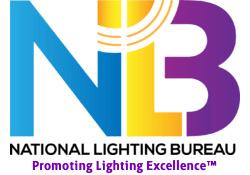02.27.15 Light and Productivity: 100 Years of Inquiry
[fusion_builder_container hundred_percent=”yes” equal_height_columns=”no” hide_on_mobile=”small-visibility,medium-visibility,large-visibility” background_position=”center center” background_repeat=”no-repeat” fade=”no” background_parallax=”none” enable_mobile=”no” parallax_speed=”0.3″ video_aspect_ratio=”16:9″ video_loop=”yes” video_mute=”yes” overlay_opacity=”0.5″ border_style=”solid” padding_top=”100px” padding_bottom=”100px”][fusion_builder_row][fusion_builder_column type=”1_1″ layout=”5_6″ spacing=”yes” center_content=”no” hover_type=”none” link=”” min_height=”none” hide_on_mobile=”small-visibility,medium-visibility,large-visibility” class=”” id=”” background_color=”” background_image=”” background_position=”left top” undefined=”” background_repeat=”no-repeat” border_size=”0″ border_color=”” border_style=”solid” border_position=”all” padding=”0px 0px 0px 0px” margin_top=”” margin_bottom=”” animation_type=”” animation_direction=”left” animation_speed=”0.3″ animation_offset=”” last=”no”][fusion_text]
The relationship between lighting and productivity has been the subject of study for almost 100 years, but still no definitive, quantifiable relationship can be shown; e.g., by how much worker productivity will improve when improvements are made to the quality of the lighting they need to get their work done. That was the consensus of a three-person Light and Productivity panel of experts assembled by the National Lighting Bureau as part of its annual forum conducted in conjunction with the EdisonReport. EdisonReport publisher Randy Reid moderated the discussion, one of four now available for viewing on the National Lighting Bureau website. Other topics included Light and Health; Specifying High-Benefit Lighting: Problems with LEDs; and Outdoor Lighting Safety and Security.
Light and Productivity panelists were:
- Mary Beth Gotti, L.C., Manager, Lighting & Electrical Institute, GE Lighting;
- Mark S. Rea, Ph.D., Director, Lighting Research Center and Professor of Architecture and Cognitive Sciences at Rensselaer Polytechnic Institute.; and
- John P. Bachner, Executive Director, National Lighting Bureau.
Ms. Gotti and Mr. Bachner provided some of the history associated with lighting and productivity, starting with studies conducted in the 1920s. Mr. Bachner pointed out that productivity was the issue that gave rise to the Bureau. In response to the OPEC nations’ 1973-74 petroleum embargo, and the energy crisis that followed in its wake, a Social Security office removed half its lighting, only to see productivity – a closely monitored metric – fall 22%. When the lighting was restored, normal productivity was restored as well.
Dr. Rea cautioned that, based on what we know today about visual performance, it would be unwise to accept without question past studies’ findings about lighting’s impact on productivity. Uncontrolled “real-world” variables, like posture, have led to unsubstantiatable or faulty conclusions. He also noted that many of the older studies involved so-called “white-paper tasks”; i.e., reading black characters on a sheet of white paper laid flat on an office desk. Today’s tasks are principally computer based, and that gives users the ability to alter the size and color of letters and numbers, and their contrast. Many workers also have the ability to control ambient light, to derive conditions with which they are most comfortable. In other words, even if past studies findings were valid, the workplace realities on which they were based no longer exist
Ms. Gotti pointed out that case studies have shown that improved lighting improves productivity and that the dollar value of even a tiny productivity increase – e.g., less than 1 percent – can have a positive financial impact that is larger than all the others combined.
All four panel NLB/EdisonReport 2014 “Lighting Forum” discussions are available for viewing free of charge on the National Lighting Bureau website. The Bureau is an independent, IRS-recognized not-for-profit, educational foundation that has served as a trusted lighting-information source since 1976. The Bureau’s services are made possible by the generous funding of its sponsors; professional societies, trade associations, manufacturers, and agencies of the U.S. government, including:
- A.L.P. Lighting Components, Inc.;
- GE Lighting;
- Illuminating Engineering Society of North America (IES);
- Imperial Lighting Maintenance Company;
- interNational Association of Lighting Management Companies (NALMCO);
- International Landscape Lighting Institute;
- Jan & Brooke Luminae, LLC
- Lighting Controls Association;
- LumenOptix;
- Lutron Electronics Company, Inc.;
- Magnaray;
- National Electrical Contractors Association (NECA);
- National Electrical Manufacturers Association (NEMA);
- OSRAM SYLVANIA;
- U.S. General Services Administration; and
- Viscor Group of Companies.
Obtain more information about the Bureau by visiting https://www.nlb.org or by contacting its staff at info@nlb.org or 301/587-9572.
[/fusion_text][/fusion_builder_column][/fusion_builder_row][/fusion_builder_container]
Here goes your text ... Select any part of your text to access the formatting toolbar.